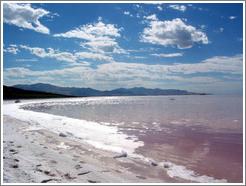
|
Great Salt Lake, Utah |
|
Spiral Jetty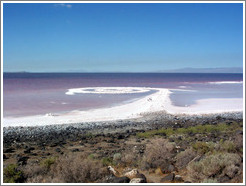 The Spiral Jetty is a large-scale piece of artwork, created in 1970 by Robert Smithson. A stone structure, fifteen-hundred feet long and fifteen feet wide, it juts out into the pink waters of the Great Salt Lake. By the time of Smithson's death, in 1973, the work was fully submerged, due to rising water levels. It finally reemerged during the drought of 2003, 30 years later, covered with brilliantly white salt crystals.
The Spiral Jetty is a large-scale piece of artwork, created in 1970 by Robert Smithson. A stone structure, fifteen-hundred feet long and fifteen feet wide, it juts out into the pink waters of the Great Salt Lake. By the time of Smithson's death, in 1973, the work was fully submerged, due to rising water levels. It finally reemerged during the drought of 2003, 30 years later, covered with brilliantly white salt crystals.



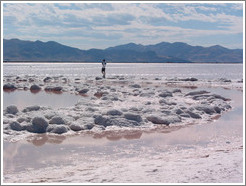
 Contrasted with the color of the lake – along this shore, a deep pink-to-red – the setting is empyrean.
Contrasted with the color of the lake – along this shore, a deep pink-to-red – the setting is empyrean.






|
|

 For many years, the abandoned duckboat and jeep, along with a tattered trailer home (not pictured), have served as the closest landmarks to the Spiral Jetty.
For many years, the abandoned duckboat and jeep, along with a tattered trailer home (not pictured), have served as the closest landmarks to the Spiral Jetty.
 The ground in the vicinity is barren and volcanic.
The ground in the vicinity is barren and volcanic.
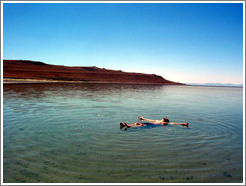 If you want to swim in the Great Salt Lake, Antelope Island (30 miles north of Salt Lake City) has one of the lake's most popular beaches. Thanks to the salinity, roughly six times that of the world's oceans, even the skinniest person can float effortlessly.
If you want to swim in the Great Salt Lake, Antelope Island (30 miles north of Salt Lake City) has one of the lake's most popular beaches. Thanks to the salinity, roughly six times that of the world's oceans, even the skinniest person can float effortlessly.
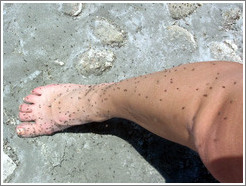



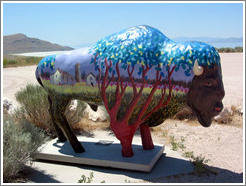 Antelope Island is known for its herds of buffalo. Mountain goat inhabit the high terrain and can sometimes be spotted on the more challenging hiking trails.
Antelope Island is known for its herds of buffalo. Mountain goat inhabit the high terrain and can sometimes be spotted on the more challenging hiking trails.



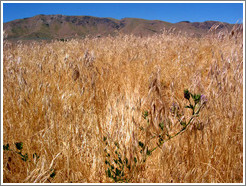 The dry, muted scenery has a surprising amount of variety.
The dry, muted scenery has a surprising amount of variety.








missing landmarks
Some friends and I went to the Spiral Jetty in October of 2005 and again in October of 2006. One of the most amazing thoughts on our first journey was "How could a pickup truck, a trailer, and an old military craft be landmarks? Wouldn't somebody just move them sometime?" Then, we saw them and were astonished by how completely permanent they were and how long they had been there and how the pink tub told a story that we didn't yet know. We knew they, like the Jetty would always be there. We expected a bit of change this year. We relished the thoughts that the Jetty and the landscape would change a little each year and we wanted to see what happened. We went on an overcast, rainy day and expected the weather and the clouds to be the biggest changes we'd see in such a short time as one year. But everything had changed!!! The salt that crunched like snow under our feet was mostly gone! Part of the Jetty was flooded. We didn't make it to the center of the Jetty. And those permanent landmarks were gone. Vanished. Totally. We think we saw tracks from whatever vehicle took them but even the land where nothing much grows did not keep its scars. The plants and winds had covered all traces of those permanent things. My belief is that they were there before Smithson created the Jetty. And my question is: WHERE DID THEY GO? WHO HAS THEM? WHY ARE THEY GONE? WHO KNOWS? AND, WHY? WHY? WHY??????????????? I have fallen in love with the ideas that float in my head when I ponder the Jetty and all the world around it. If anyone knows even a glimmer of an answer to my questions or even has a theory, I'd enjoy communicating with that person or persons. My email is b8497a@acn.net and my name is Susan. And, I guess I'm coming to believe both that nothing ever changes and everything changes at the same time.
-- susan bowlden